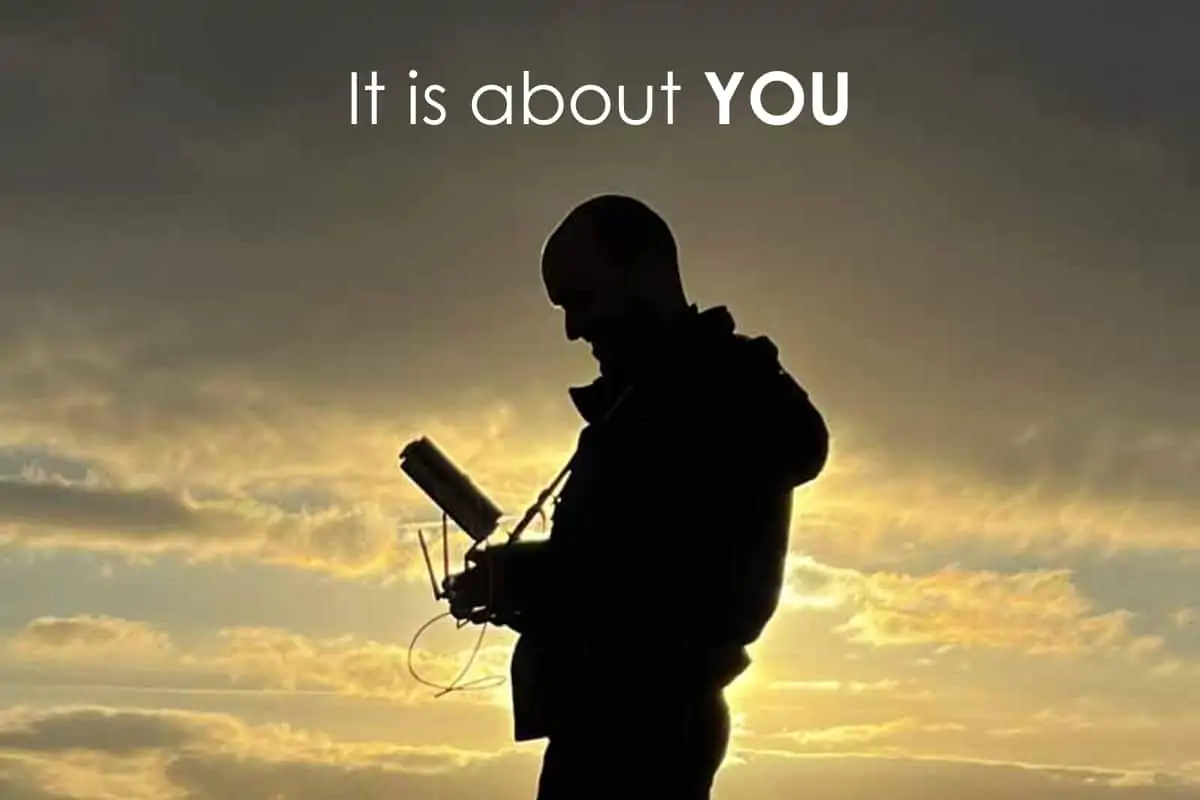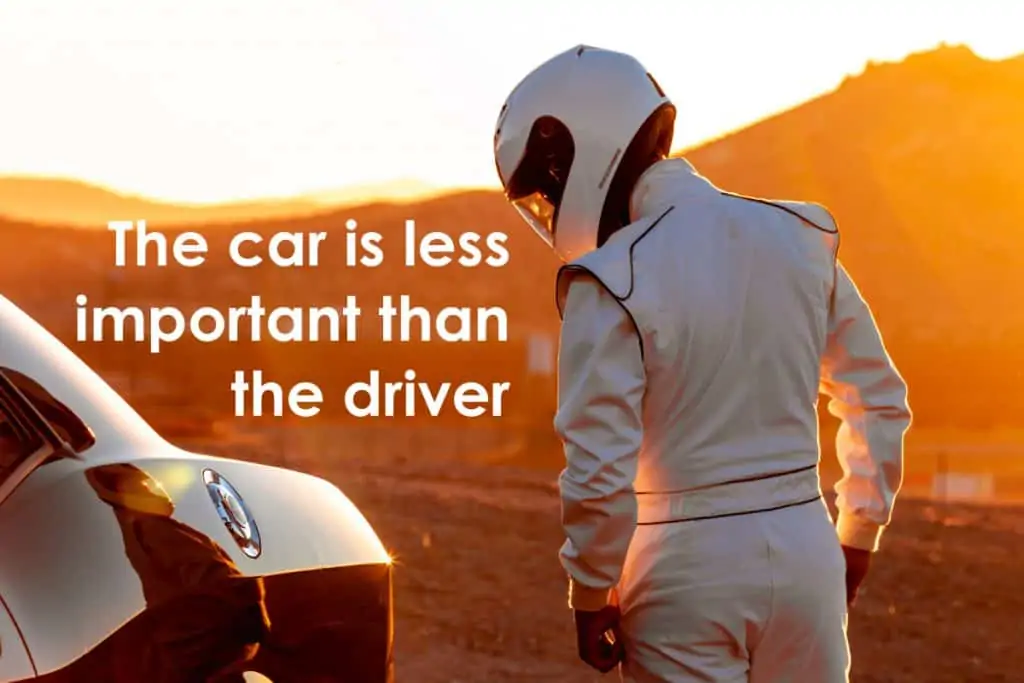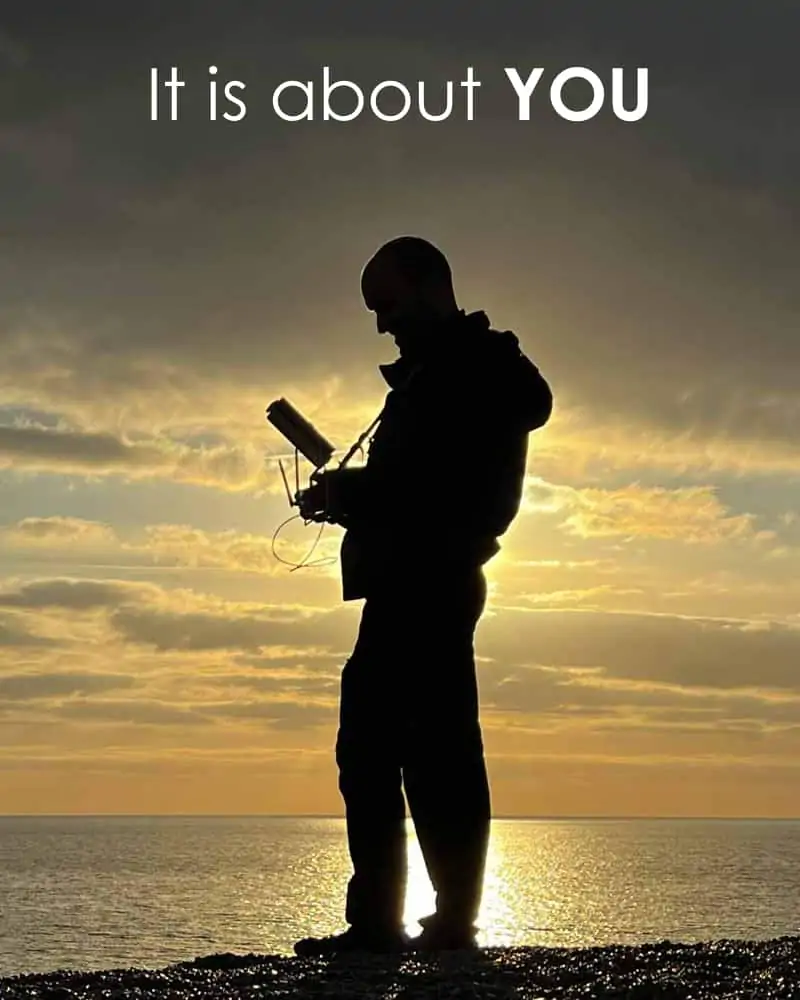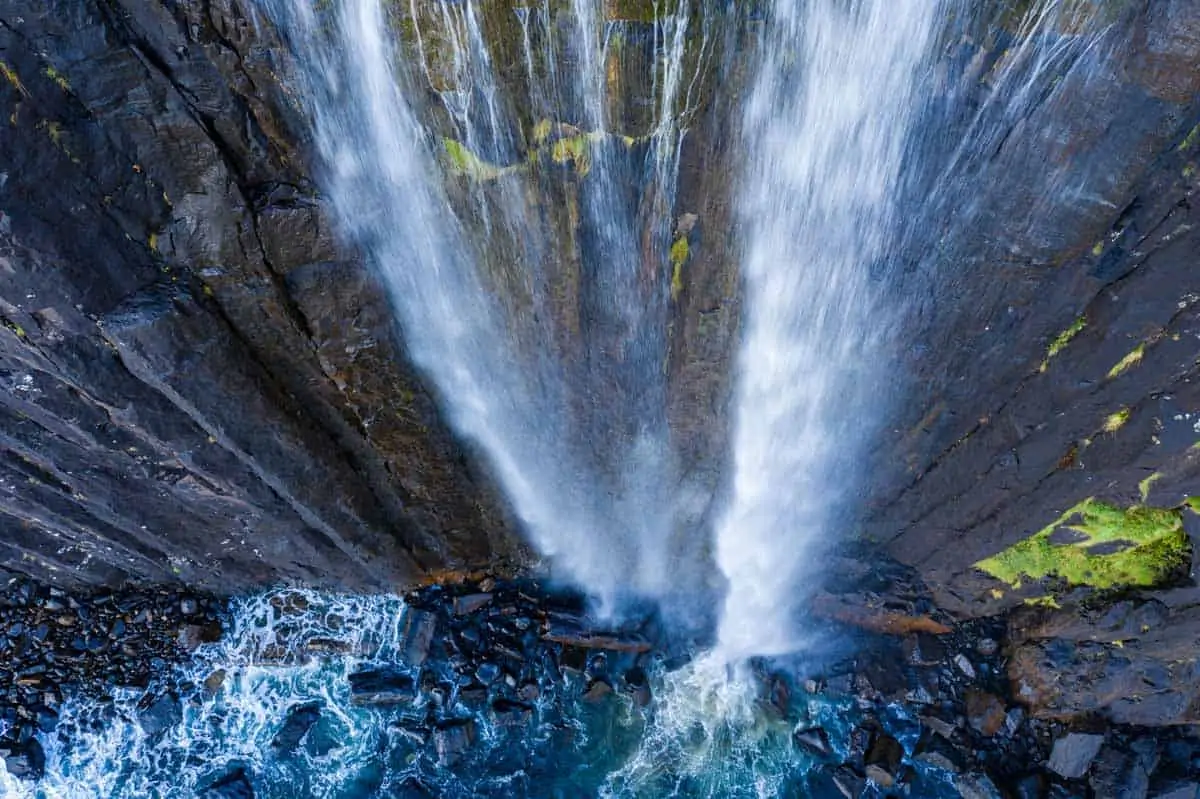
- 29.12.21



In 2015, when we founded PhantomFlightSchool, Drones were expensive, and often temperamental. You had to work to master the technology. A battery would keep it in the air for only around ten minutes at a time. Fly-aways were not uncommon. There was a lot that might go wrong.
To earn money from Drone Work you had to have a Permission for Aerial Work (PfAW), which involved an expensive week-long Course of Study, followed by around 50 hours of work to put together your own Operations Manual from scratch, and then you had to complete a challenging Flight Test, with a failure rate that hovered around 50%.
In short, the barrier to entry to becoming a Commercial Drone Pilot and flying a Drone safely and effectively was high. Which severely limited the number of Commercial Drone Pilots. Which in turn meant the fees you could charge for Drone Work once you had climbed over that barrier was also high. Happy Days for those “on the inside”.
Times have changed. These days you don’t need a PfAW (2014 – 2016), a PfCO (2016 – 2020), a GVC (from 2021) or even an A2CofC (from 2021) in some circumstances, in order to undertake paid-for Drone Work. You don’t need an expensive drone. A DJI Mini 2 and a Flyer and Operator ID are enough to enter the market.
Earning money from Drone Work is not about the Drone. It is about the Pilot.

So how do you stand out from the crowd of other Drone Operators. Get your nose ahead. Make sure you are able to earn more, spend less, and enjoy your work more?
Our Top Seven Tips
- Invest in Yourself – Never Stop Learning
- Start with a cheap drone
- Understand that you will have to find clients. They won’t find you [Clients won’t come looking for you?]
- Don’t Blind them with Science
- Bid on Quality, not on Price. And offer to work for nothing*
- Make sure you know how & where to fly, what to shoot, and how to shoot it
- Follow the money – the data clients want
*Only if they don’t want the data you produce
1. Invest in Yourself
It is all about you. The broader your range of skills, the more client needs you can meet, and the happier your client is likely to be.
We have been privileged to spend a lot of time with some of the best photographers and videographers (who happen to also have a drone in their kit bag) in the UK. We have watched how they work. We’ve questioned them about how they work. And we’ve learned from how they work. Their skill-sets are bonkers-wide. They know everything (and we do mean everything) about: Cameras; Lenses; ISO; Aperture; Exposure; Composition; Filters, Light; Grabbing attention; B Roll; Telling a Story; Photo Post-Production and Video Editing, and a hundred other things besides.
For the best photographers and videographers, it is clear that every day is a learning day. Being a successful Drone Photographer or Videographer is not about the Drone. It is about you. Never stop learning.
2. Start with a Cheap Drone
When you check into a good hotel, do you worry about how big the Presidential Suite is, or are you happy to have a good room with air-con and a nice view out the window. The DJI Mini 2 is not the Presidential Suite. But it is 90% of every drone you might ever want. Yes, there are more expensive, and slightly better drones. Bigger drones. Louder drones. Does anyone buy a Ferrari or a Harley Davidson as their first wheels. Start here, with the £500 DJI Mini 2. Spend less. Make more! When a Client wants Drone Work that requires a more advanced drone, and has shown a willingness to pay more, then rent that drone. We’ll rent it to you. Heliguy will rent it to you. Fat Llama will rent it to you. Renting when you need it is 100x better than buying expensive kit you might end up using rarely. That’s why there are so many camera-lens-rental companies. Because renting rarely used, expensive kit, is a really good idea.
3. Understand that You will have to Find Clients
Here is the bad news. Clients will rarely come to find you. Because, sorry to say, they don’t know they need you. In our view, this is the single biggest thing holding back the Drone Work Sector. If your windows are dirty, you know you need a window-cleaner. If your car is running out of fuel, you know you need a filling station. If you want to extend your home, you know you need a builder. But if you are not quite sure what the exact dimensions of your property are, or how to make your own website pop with arresting images, or how to build a digital twin of anything physical you own to assist with any future insurance claims, do you know you need a Drone Pilot? I don’t think people do, as yet. So don’t invest tons of money in the best website ever created. Nor huge chunks of time laboriously building a portfolio of images or video. Because, sorry, nobody is looking. Instead, invest in getting in front of clients, and then make them an offer they cannot refuse.
4. Don’t blind them with Science
We love drones. We are amazed by the GPS technology that enables them to hover in one place, by the 4K quality of the camera, and especially, by the engineering virtuosity that is the gimbal, which means the camera remains fixed, stationary, rock-solid, as though on a 400ft tall tripod, even as we can see the drone itself being buffeted around in high winds. We love the failsafes. The “low battery return to home”. The uncanny knack of the drone to land, all by itself, back where it took off from, whenever we ask it to. When we were growing up, we remember that at the car dealership a salesman would proudly pop the bonnet on whichever car he was trying to sell you, and show you the cylinders and the carburettors and the neat layout of the intricate pipes and wiring between it all. Because that mattered. Not any more. All we want to know when we buy a car is how fast, how comfortable, how economical, and how good is the resale value. Do people even look under the bonnet any more? The same goes for Drone Work. Your client may have a passing interest in the drone you plan to use. But they are much more interested in the data you will be able to give them. So don’t bore them with drone detail. Focus on what you can give them. The output, not the input. Sell the sizzle, not the sausage.
5. Bid on Quality, not on Price. And offer to work for nothing
Now that Drone Work is something of a free for all, with low barriers to entry, there will always be someone willing to practically give their work away. Because they are just getting started. Because it is a hobby for them. Or because they haven’t yet worked out what it costs to do this properly. That’s often the way. Racing to the bottom on price in such circumstances is bad business.
Instead, aim to always differentiate what you are offering to a potential client. Sell them on the quality of what you can offer. Because frankly, if the deciding factor between your work, and someone else’s, is a price difference of a few £100, then you haven’t done this right. Because the difference in value to a client between a good drone job (yours) and a bad one (someone else) should be £1,000’s.
Here are some of the ways you may have been told you can do this:
- Exemplary safety record
- Full insurance
- Cutting-edge latest-edition drone
- GVC No. XXX YYY ZZZ
This is a bit like showing off the technical features of your Drone. It largely counts for nothing. Nice to have. But kind of assumed by the client that you’ll have this covered. Yawn.
Here is a much better, attention grabbing way:
Our work is free of charge…..
- Let us show what we can give you
- You only pay £XXX if you want the data
- If you don’t think it will save you money, or make you money, don’t pay.
And
- As well as taking photos and video of your building / land / site, we can give you
- A RealTime LiveStream to your office desk while we are capturing the data, so you can tell us if there is anything particular you want us to focus on
- A highly accurate 2D top-down rendition of your site, from which you can take extremely accurate dimensions
- A 3D model of your site and assets, either virtual or 3D printed
- For a regular monthly fee, we can return and recapture images of your assets, with the ability to “swipe to see” differences through time
- We’ll have the data with you within 24 hours of visiting site
- We can share the data with you via: WeTransfer / Dropbox / Google Drive or however else you prefer
- All data gathered is completely confidential
- We store none of your data. Once you accept receipt of the data, it is immediately destroyed (unless you would like us to keep a back up for you)
6. Make sure you know how & where to fly, what to shoot, and how to shoot it
We meet plenty of people who fly Drones a lot. Who take off. Whiz their drone around the sky at max speed. Pausing occasionally to take a photo or grab some video. As if playing a game of composition hide and seek. And then hit Return to Home. Never having paused to check the image they’ve just taken to see if they can refine and improve it.
We are privileged that we get to work with experts. Who do so much less. Which may be a universal truth. Federer on a tennis court appeared to be trying less than anyone. Brian Lara with a cricket bat. Tiger Woods with a putter. Less is so often more.
Flying without a plan, without purpose, without challenge, without jeopardy, get’s you nowhere. Because when it is Show Time, and you are flying in a challenging space, with a challenging client on your shoulder, all that “big air, aimless” flying counts for nothing.
We can help you to make sure that every time you go out to fly your drone, you practice with a purpose, and you make progress with your flying, your photography, and your videography. That is what all of our training is all about.
7. Follow the Money - The Data Clients Want
A lot of aspiring drone entrepreneurs look to estate agents, housebuilders, and agriculture, as well as to renewables, as likely sources of work. Drones being flown either by employees of the business themselves, or by professional drone pilots, are a feature of all of these sectors. However, we are not certain that these are the best places to look for work. Here is a quick run down of our view of some of the main sectors and specialisations you may wish to consider.
We go into all of this in far more detail on our six-week, six two-hour episode Zoom Course “Ultimate Toolkit for Commercial Drone Flying”, and on our “Commercial Drone Flying in a Day” Course. As well as on our specialist one day workshops on Inspection, Surveying, and RealTime Data Streaming.
- Residential Property – Estate Agents often do this themselves. Poorly paid, commodity work
- Commercial Property – Changes hands much less often. So not required very often. Hence hard to build repeat business in this area
- Agriculture – On the largest farms, they are doing this themselves. On smaller farms, the farmer relies on an agronomist. And the Agronomist does not want a drone replacing his voodoo value with science
- Drone Delivery – Going to be huge, but is going to be led by $bn companies employing few drone pilots. Witness what has happened, or rather not happened, with Amazon Prime Air
- Search & Rescue – All unpaid and voluntary
- Emergency Services – Have their own drone capacity. Rarely sub this work out to 3rd parties
- Weddings – Hard to justify the cost of a dedicated drone pilot at all but the very largest events. But if you are a wedding photographer, you need a drone
- Insurance – Drones can add huge value where there are large-scale property damage losses to be assessed. Certainly an area of opportunity
- Security and Surveillance – We see plenty of likely growth in this area. Well worth investing some time talking to security companies about what you can offer to them
Here are the ones where we think there are going to be the best opportunities in future:
- Surveying / Creating Digital Twins
- Inspection
- RealTime Data Streaming
We think these are key area for all commercial drone pilots to be familiar with. On the face of it, all three of these are straight-forward to get the hang of. In our experience, it can take a long time, and a lot of heartache, to master each of them.


